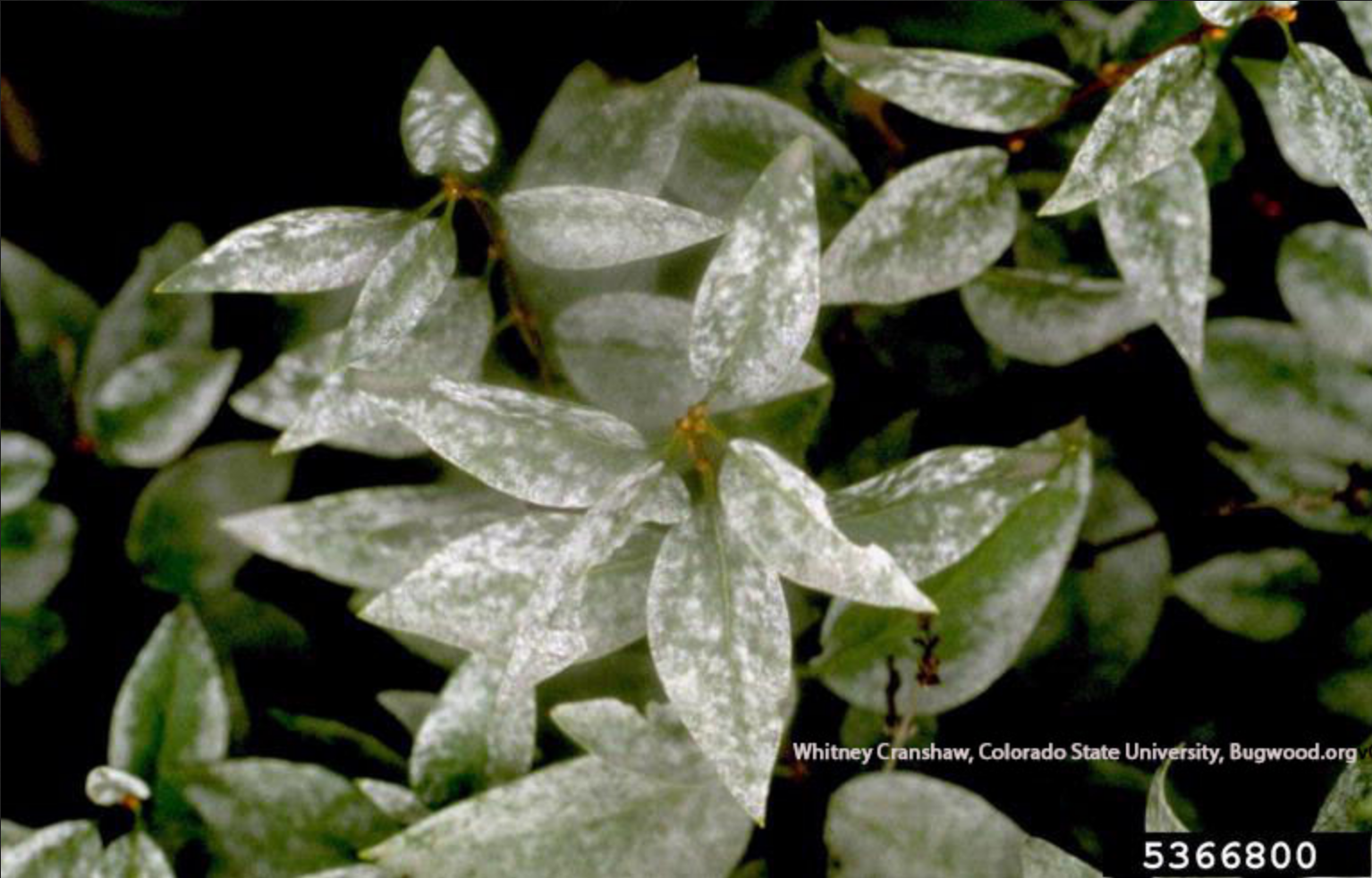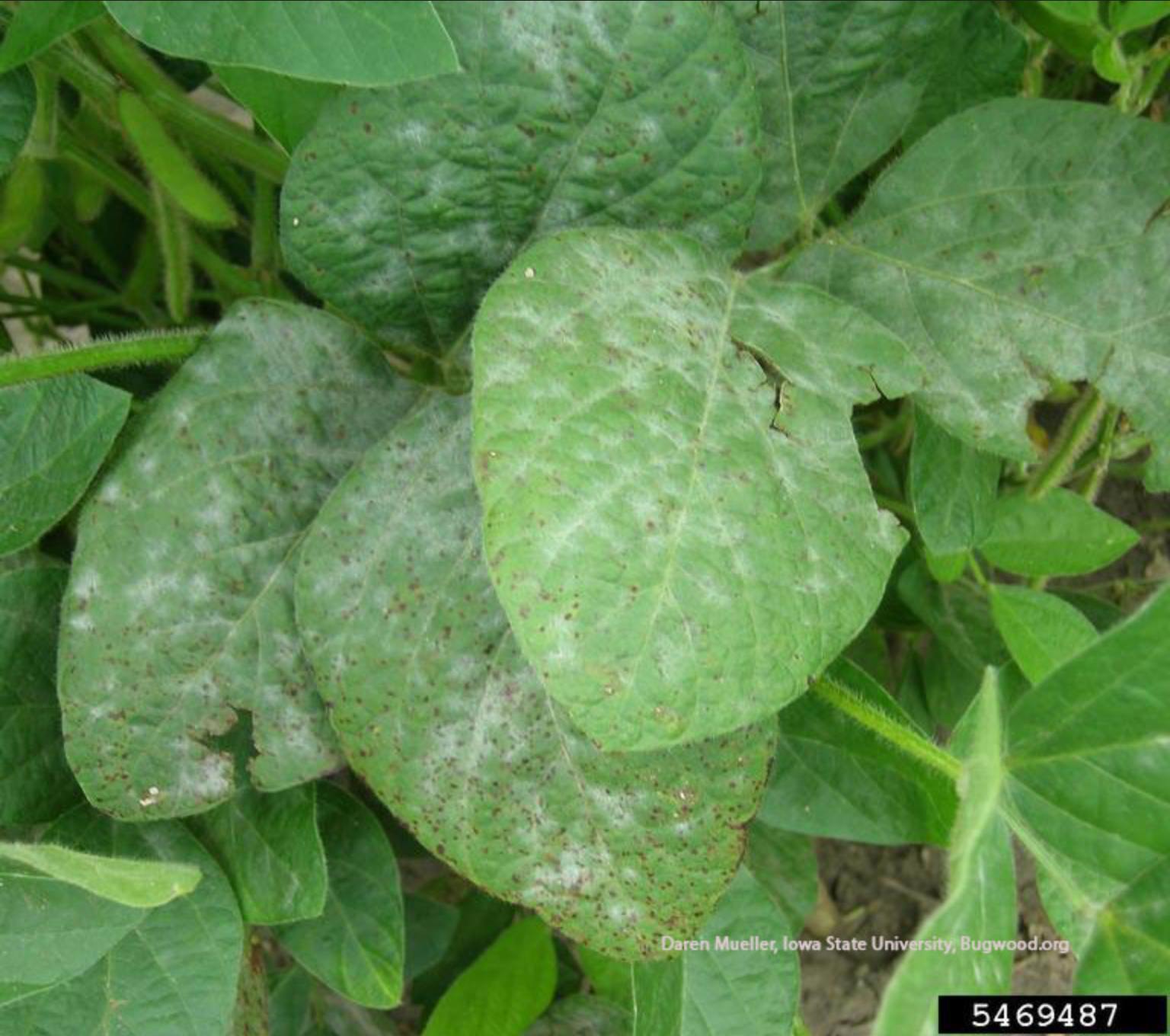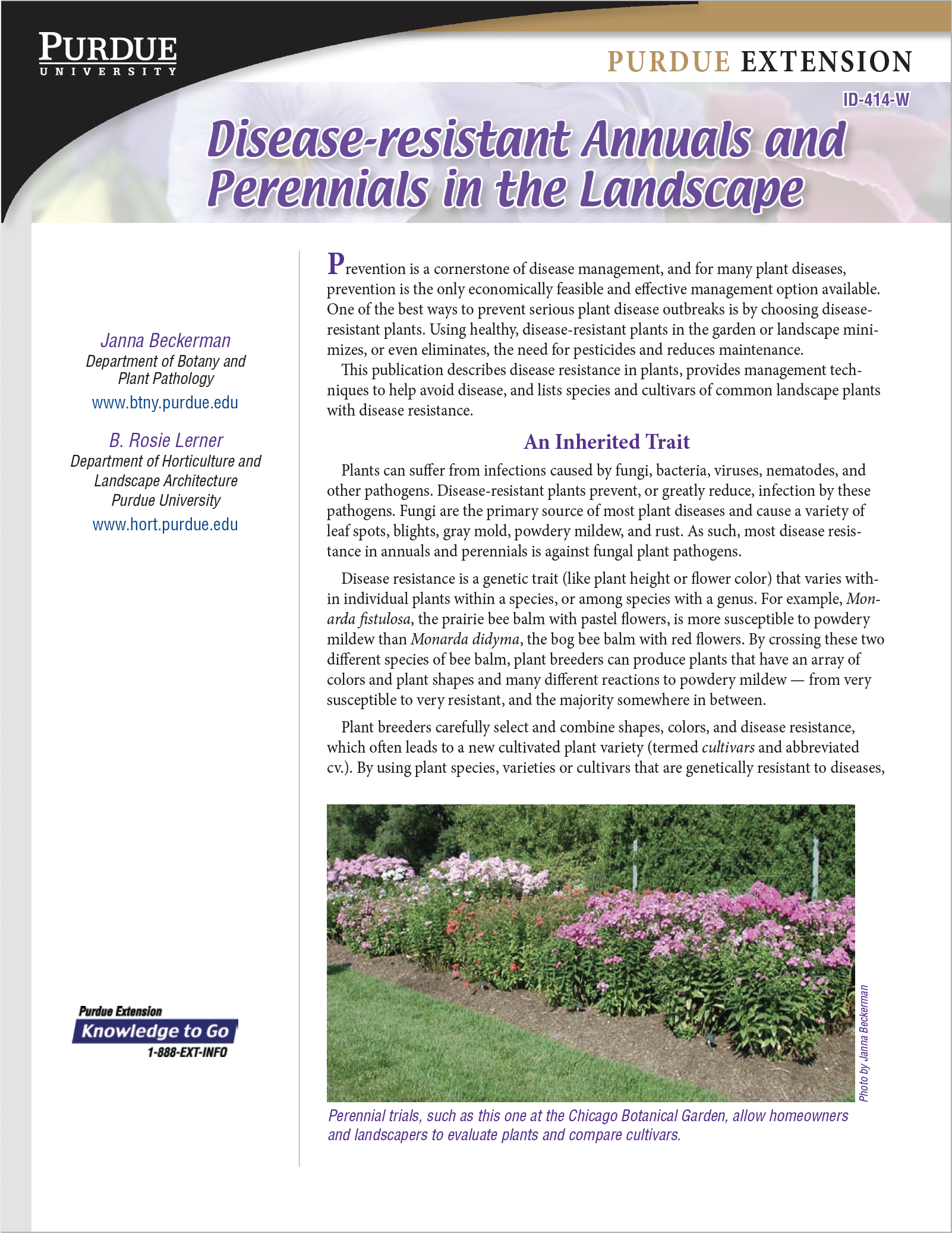Picture of the Week
June 6, 2022
Powder Mildews - NOT ALL THE SAME
Gail Ruhl, Senior Plant Disease Diagnostician-retired, Purdue University
Powdery mildew (PM) is the name given to a group of diseases with a grayish-white, powdery coating of spores and fungal mycelia visible on the surface of leaves, stems, flower petals and fruit. Powdery mildew is caused by several closely related fungi, each having a limited host range. In other words, observing powdery mildew on lilac leaves should not cause concern about spread to nearby zinnias.
All PM fungi are obligate parasites, meaning that they must grow and reproduce on living tissue. PM survives from one season to the next as spherical, thick-walled, fruiting bodies, called chasmothecia (previously called cleistothecia), on the bark of branches and stems of woody, perennial hosts and also on fallen, infected leaf debris beneath plantings. In spring or early summer, airborne spores from overwintering chasmothecia infect susceptible leaves to once again begin the infection cycle.







